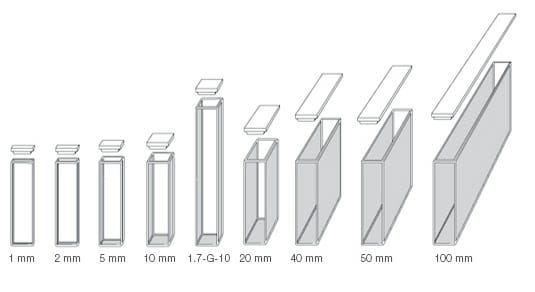What is a typical sample?

The majority of samples employed in UV/Vis spectroscopy are solutions placed into a cuvette for measurement. Cuvettes are small rectangular glass or quartz containers. They are often designed so that the light beam travels a distance of 1 cm through the contents, but the path length can vary from 1 or 2 mm all the way up to 10 cm. The sample cell contains a solution of the substance you are testing, usually very dilute. Long path cuvettes are normally used to measure very dilute solutions. Beer’s Law tells us that the longer the path length of sample, the greater the sensitivity of analysis.
The solvent is chosen so that it doesn’t absorb any significant amount of light in the wavelength range of interest. Most cuvettes are designed to fit into a 1 cm square holder in the instrument.
In high performance UV/Vis/NIR instruments it is common to measure other non-solution sample types. With the proper diffuse reflectance accessory, such as an integrating sphere, solid samples, both transparent and opaque, can be measured. With specular reflection accessories samples such as mirrors and optical coatings can be measured.


